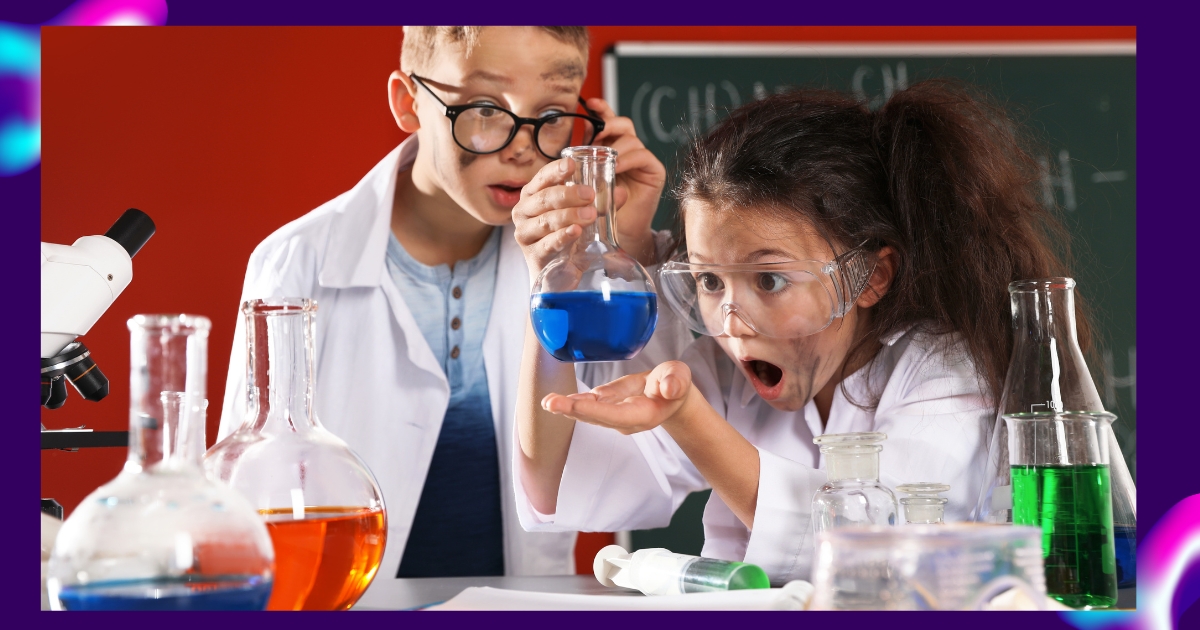Homeschooling opens doors to hands-on learning experiences that can turn your kitchen or backyard into a bustling science lab. When it comes to science, some of the best lessons involve getting messy. From bubbling concoctions to gooey creations, getting a little dirty can make learning not only effective but also unforgettable.
Below, you’ll find practical, actionable ideas for fun science experiments for kids, with a special emphasis on hands-on, slightly messy activities perfect for your homeschool curriculum.
1. The Messy Power Of Chemistry
Chemistry experiments are some of the most exciting for young learners. Watching different substances interact can spark critical thinking and curiosity about the scientific principles behind them. The best part? Many great experiments can be done using everyday items from your home.
Explosive Volcano Experiment
This classic activity is as fun as it is messy. It’s a great way to teach kids about chemical reactions while offering a spectacle of fizzing lava pouring out of a homemade volcano.
What you need:
- Baking soda
- White vinegar
- Dish soap
- Red food coloring
- A large tray to contain the mess
- Modeling clay or a small plastic bottle
What to do:
- Shape the modeling clay around the plastic bottle to form a volcano. Place it on the tray to catch any overflow.
- Add a couple of tablespoons of baking soda to the opening of the bottle.
- Mix vinegar, a drop of dish soap, and red food coloring in a separate cup.
- Pour this mixture into the volcano and watch the lava erupt!
This experiment not only covers chemical reactions but also introduces geology if you discuss real-world volcanoes while recreating an eruption.
Slime-Making Extravaganza
Few things excite kids as much as making their own slime. It’s gooey, stretchy, and entertaining enough that they won’t even notice they’re learning about polymers.
What you need:
- School glue (clear or white)
- Baking soda
- Contact lens solution
- Food coloring or glitter (optional)
What to do:
- Mix about 4 ounces of glue and ½ teaspoon of baking soda in a bowl.
- Add a small amount of food coloring or glitter if desired.
- Slowly stir in contact lens solution (start with one tablespoon). You’ll see the slime forming as the solution reacts with the glue.
- Knead the mixture until it reaches the perfect slimy texture.
Talk with your child about polymer chains and why the slime stretches as it does. Encourage creativity by experimenting with textures and colors.
Fizzy Lemon Volcano
Want a kitchen-friendly experiment? Create a fizzy lemon volcano to explore chemical reactions.
What you need:
- A few lemons
- Baking soda
- Food coloring
- Spoon or knife
What to do:
- Cut off the top of a lemon and hollow it out slightly.
- Add a few drops of food coloring to the lemon’s hollowed-out portion.
- Sprinkle baking soda inside.
- Watch as the acid from the lemon juice reacts with the baking soda, creating a fizzy, colorful eruption.
Kids will love the tactile experience of squeezing the lemon to release more juice and keep the reaction going.

2. Filthy And Fun Nature-Based Projects
Exploring nature gets kids outdoors, encourages curiosity, and sometimes gets them covered in mud. The natural world is a treasure trove of opportunities for slightly dirty but highly educational science experiments.
Mud Painting in the Name of Earth Science
Gather some dirt from the yard and transform it into a creative and scientific activity. This project teaches your child about soil composition and encourages artistic expression.
What you need:
- Different types of soil or dirt from various locations
- Water
- Paintbrushes
- Paper
What to do:
- Collect soil from different locations and compare their textures and colors.
- Mix water into each sample to create mud paint.
- Use paintbrushes to create mud paintings on paper.
- Discuss why soils differ in color and texture.
This activity will spark conversations about the importance of soil in growing plants, erosion, and biodiversity.
Worm Habitat Observation
Creating a worm habitat is one of the dirtiest yet most rewarding hands-on experiences. It teaches kids about decomposers and nutrient cycling in the ecosystem.
What you need:
- A large clear container or jar
- Soil
- Sand
- Dead leaves or food scraps
- Earthworms
What to do:
- Layer the container with alternating layers of sand and soil.
- Add some dead leaves or small vegetable scraps on top.
- Gently place the earthworms into their new home.
- Observe how the worms burrow, mix soil layers, and break down organic material.
You’ll want to place the habitat in a cool, dark place and check on it daily. Have your child take notes about changes in the dirt’s appearance or how quickly the food scraps disappear.
3. Mess-Free Learning With A Purpose
Not every science project needs to involve a massive mess to be fun and engaging. Here are some ideas where the “filthy” factor is more controlled, perfect for days when you’d rather have minimal cleanup.
Soda Geyser Extravaganza
This high-impact activity lets your kids observe just how volatile carbonation can be.
What you need:
- A 2-liter bottle of diet soda
- A pack of mentos candy
What to do:
- Take the soda bottle outside and place it on a flat surface.
- Drop a row of 5–7 mentos candies into the soda at lightning speed.
- Step back and watch the geyser reach for the sky!
Discuss how carbon dioxide that’s trapped in soda reacts with mentos to escape quickly.
Plant Lifecycle Dirt-Free Investigation
If you want to bring science indoors and keep things clean, try growing seeds in jars without soil. This experiment teaches kids about plant biology without getting their hands muddy.
What you need:
- A few clear jars or plastic cups
- Paper towels
- Seeds (beans or peas work best)
- Water
What to do:
- Line the inside of a jar with damp paper towels.
- Between the paper towel and the wall of the jar, insert seeds.
- Place the jar in a sunny spot and add water to keep the paper towel moist.
Over the next few weeks, your child can observe how roots grow downward while stems stretch upward. Use this as a lead-in to topics like photosynthesis and plant anatomy.
4. Messy Science Meets Physics
Physics experiments often involve motion, forces, and energy, giving kids plenty of opportunities to get their hands dirty while learning key principles.
Oobleck Obstacle Course
Oobleck, a mix of cornstarch and water, acts like a liquid under slow pressure and a solid under quick pressure. It’s a sensory-rich way to teach kids about non-Newtonian fluids.
What you need:
- 2 cups of cornstarch
- 1 cup of water
- A large mixing bowl
What to do:
- Mix the cornstarch and water in the bowl. You’ll know it’s ready when it starts to harden under pressure but feels like a liquid when you stop pressing.
- Pour the Oobleck into a shallow tray and create small obstacles like toy cars or marbles.
- Challenge your child to move things across the surface and observe how they behave differently when they roll slowly versus quickly.
This experiment combines physical properties with fine motor skills and plenty of messy fun.
Homemade Parachutes
Designing and testing parachutes allows kids to explore gravity, air resistance, and engineering concepts.
What you need:
- Coffee filters, plastic bags, or lightweight fabric
- String
- Small toys or action figures
What to do:
- Attach strings to the edges of the coffee filter or fabric and tie them to a toy.
- Toss the parachute from an elevated space (a balcony or stairs works great).
- Experiment with different materials, weights, and designs to see which parachute works best.
It’s a perfect opportunity to discuss how air resistance helps slow an object’s fall.
No matter the level of mess, these experiments turn science into an adventure for both you and your child. Learning by doing, failing, and trying again enriches their understanding of the natural world while building curiosity, creativity, and a little resilience.
Igniting Curiosity And Creativity
Science gets so much better when it’s hands-on, and messy experiments are the perfect way to ignite your child’s curiosity and creativity! From gooey concoctions to muddy adventures, these activities bring science to life in a way that books and screens just can’t. We hope you’ll roll up your sleeves, have a blast trying these ideas, and make plenty of joyful memories along the way.
Got a favorite experiment or a hilarious messy moment? Share it with us—we can’t wait to hear all about your child’s filthy fun in the name of learning!



